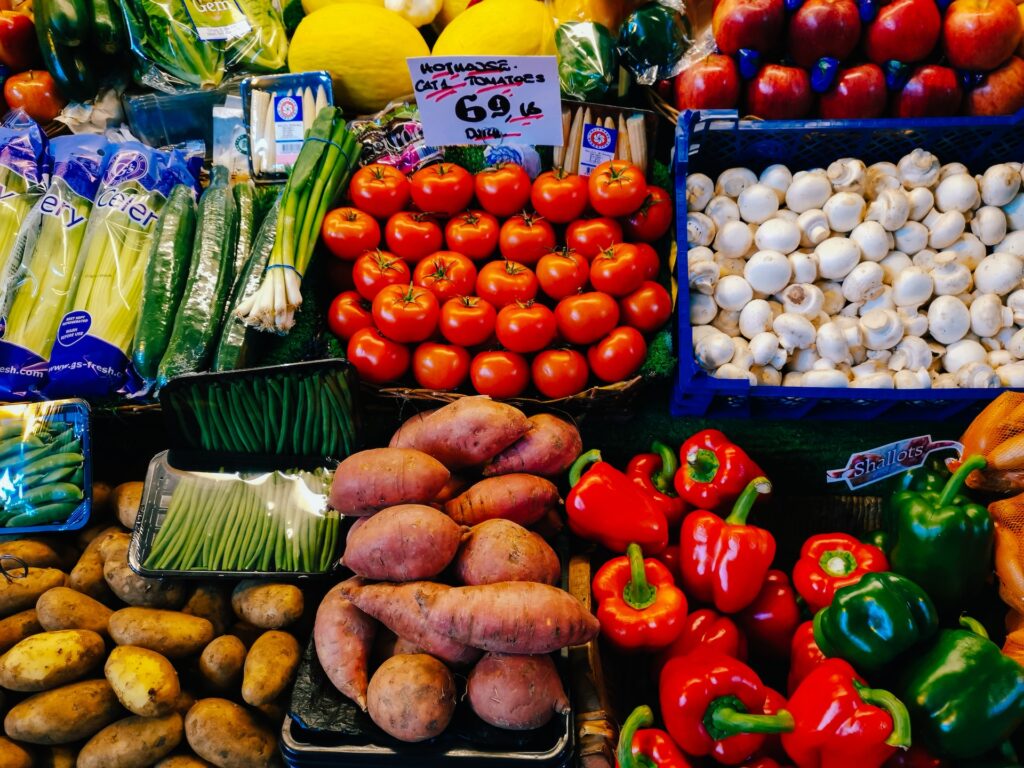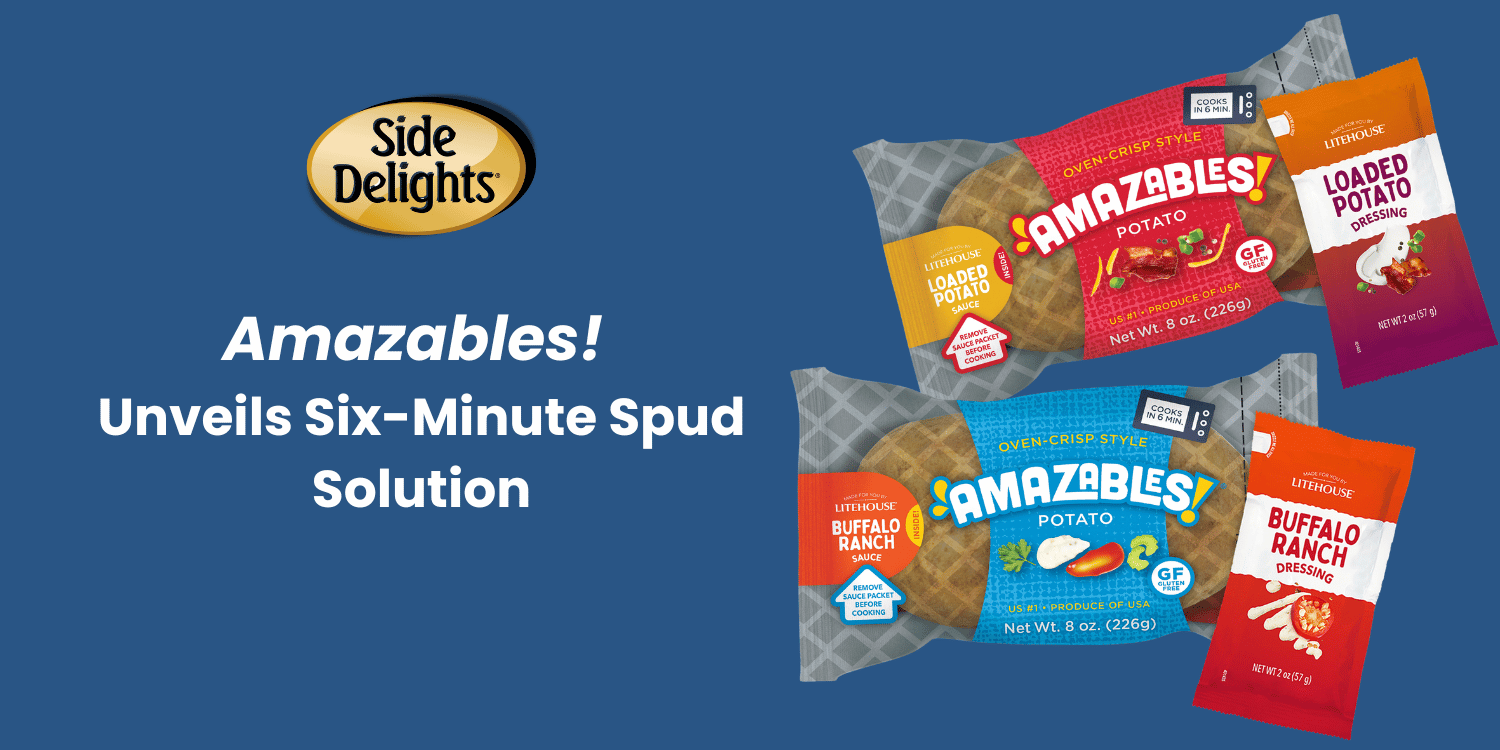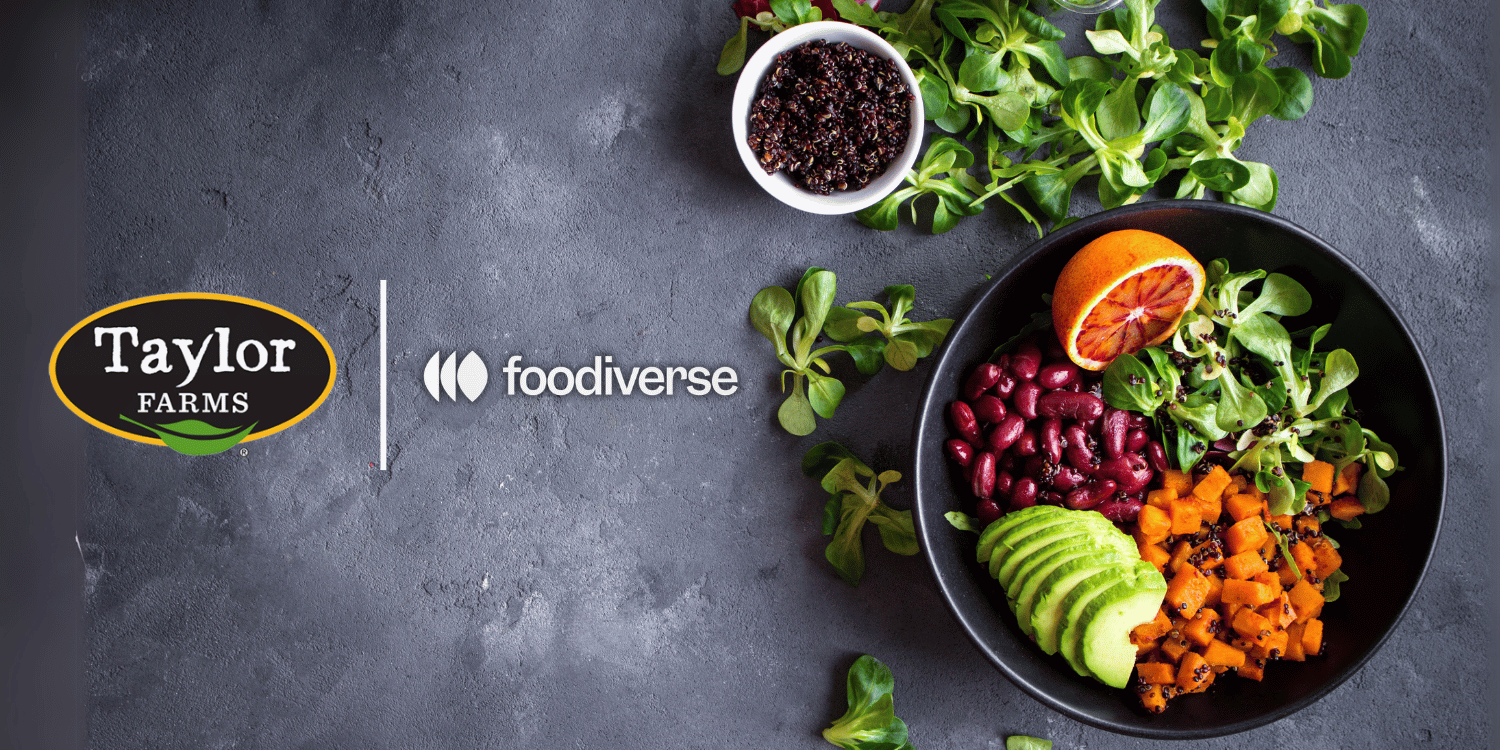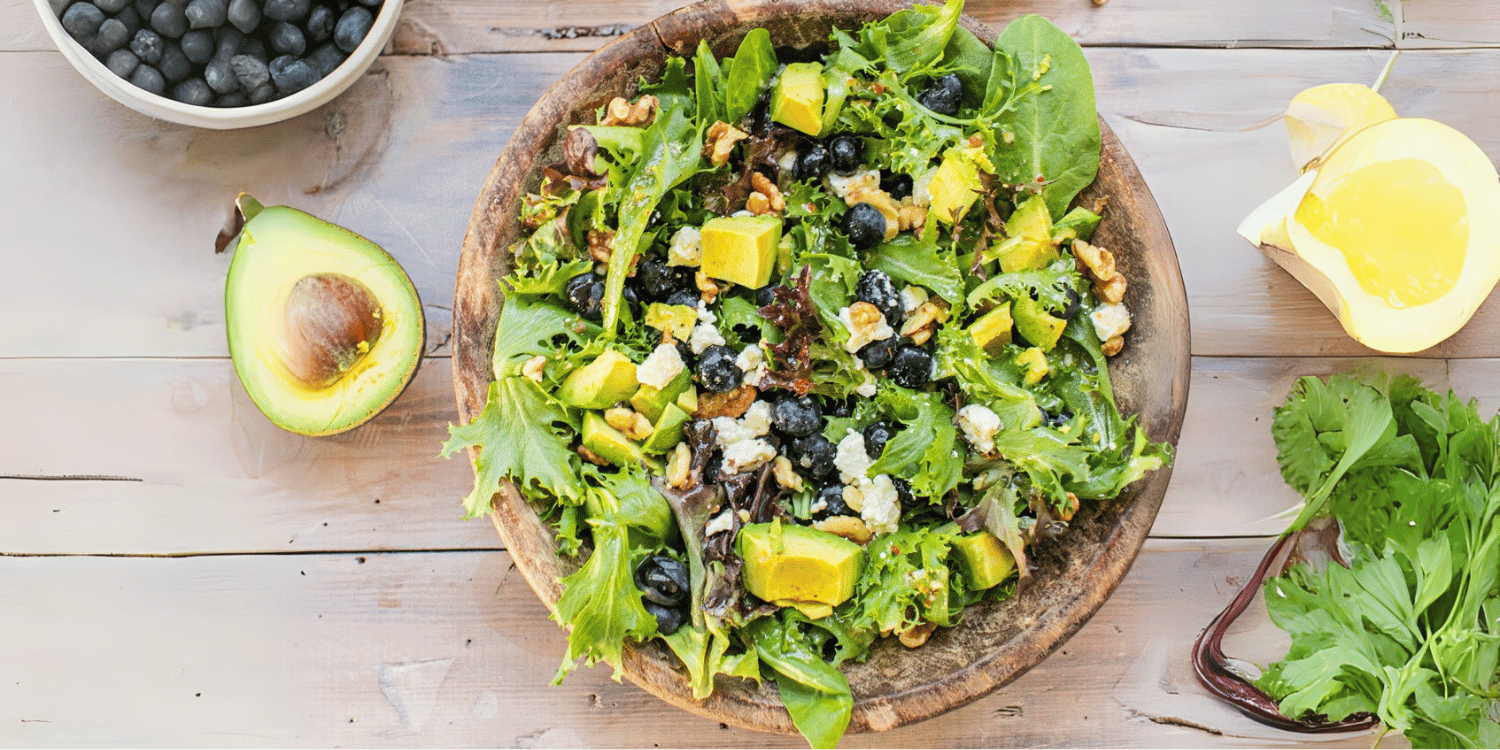Packaging design is gaining stature as an important aspect of branding and marketing in every industry, including the produce sector.
It plays a pivotal role in making the products attractive to the target customers and boosting sales.
Despite the emphasis on quality and sustainability, the visual appeal can not be ignored.
Every shape, color, and graphic element contributes to the overall perception of the product.
Consequently, the right packaging design can differentiate your produce from the competition, prompting customers to choose it over others.
This blog will explore a few key design elements that can be instrumental in enhancing the visibility of your produce and making it a preferred choice among customers.
Contents
- Key Packaging Designs To Make Your Produce Stand Out
- 1. Use of Vivid, Eye-catching Colors
- 2. Packaging Transparency for Product Visibility
- 3. Unique Shapes to Set Product Apart
- 4. Use eco-friendly, sustainable materials.
- 5. Incorporate Brand Story on the Package
- 6. Bold, Clear Typography for Easy Reading
- 7. Incorporate Creative, Appealing Graphics.
- 8. Strategically Utilize White Space
- 9. Consider Cultural Aspects in Design
- 10. Promote the Product’s Freshness.
- 11. Show Nutritional Information Clearly
- Final Thoughts
Key Packaging Designs To Make Your Produce Stand Out
1. Use of Vivid, Eye-catching Colors
The impact of color in packaging design cannot be overstated.
It acts as an immediate communicator, creating a visual impact that pulls customers’ attention to your product.
Choosing the right colors for your packaging is crucial.
The correct color combination can visually enhance your product, setting it apart from competitors on the store shelves.
Vivid, eye-catching colors not only help make your product stand out, but they also evoke specific emotions and responses from consumers.
Each color carries a unique significance and aesthetic appeal.
For instance, green often communicates freshness or organic quality, making it ideal for packaging fresh produce.
The use of color significantly helps connect with your consumer’s psychological perceptions and stimulate their buying behaviors.
Supporting this idea, researchers have found that approximately 90% of impulsive buying decisions are based on color alone.
Thus, incorporating vibrant colors into your packaging is critical for attracting impulsive buyers and increasing sales.
Your chosen colors also need to align with your brand’s identity.
Consistent use of specific colors can help build brand recognition and contribute to a unified brand image.
Furthermore, using various shades of the same color or contrasting colors can make your packaging more striking and dynamic.
You must also consider what the colors you are using will portray about the product’s taste and quality.
For fruit and vegetable packaging, for example, using warm colors like reds and oranges can provoke a sense of sweetness and ripe flavor.
In the context of packaging design for produce, it’s beneficial to use colors that naturally represent the type of fruit or vegetable you’re selling.
This can help set the right expectations for the consumer and further promote the freshness of your products.
Lastly, it’s vital to remember that the colors used in your packaging design will also have to complement the color of the actual product inside.
This ensures the overall appeal of your packaging remains consistent and attractive when the package is clear or semi-transparent.
With well-thought-out color choices and strong emphasis on aesthetics, your produce can attract more customers and stand out in a crowded market.
2. Packaging Transparency for Product Visibility
One essential step in making your produce stand out is incorporating packaging transparency.
The use of transparent packaging gives the buyer an actual look at the product, thus instilling a sense of trust and credibility.
When a customer can visually confirm the quality and freshness of the produce, they are more likely to make a purchase.
Moreover, transparency in packaging sets an honest tone for your brand, which can go a long way in fostering a positive relationship with consumers.
An impactful transparency in product packaging strengthens the credibility of your brand and amplifies shoppers’ trust.
This kind of transparency is quite beneficial in reinforcing and validating the claims you make about your product.
For instance, if you’re advocating for the freshness of your produce, allowing consumers to see this freshness physically can contribute significantly to your marketing efforts.
However, while transparency is crucial, it’s paramount to ensure that your product is displayed appealingly.
A poorly displayed product, even if in transparent packaging, can fall flat in catching the consumer’s eye.
Therefore, your product should be arranged neatly to offer a pleasing view and an attractive aesthetic through the packaging.
Besides, the inclusion of vibrant colourful produce could make your products more appealing when combined with transparent packaging.
The use of packaging transparency extends even to providing information about your product.
The more information you share about your products, the more transparency you create, thus leading to higher credibility and consumer trust.
Overall, when properly employed, packaging transparency can be a powerful tool to make your produce stand out on the shelves.
Remember, however, that this transparency should be accompanied by all other crucial elements of effective packaging design.
Such include clear typography, appealing graphics, and the strategic utilization of white space.
3. Unique Shapes to Set Product Apart
One compelling way to make your produce stand out on the shelf is to utilize unique shapes in your packaging design.
Breaking away from the conventional box or bag can not only draw consumer eyes but also create association with the product’s particular form.
From hexagonal honey jars to prism-shaped juice boxes, the range of possibilities is vast if you’re ready to push boundaries.
Consider how your product’s shape can align with its identity – for instance, a round package for small fruits or a tall, slim one for thin vegetables.
An unusual package shape, appropriately chosen, can even hint at the product’s attributes or benefits, reducing the need for the potential buyer to read or examine it in great detail.
The statement above elucidates how shape can communicate key product features.
It is for this reason that strategic planning around package shape is critical.
Furthermore, the shape must accommodate the need for simplicity in opening and usage, keeping in mind consumer convenience.
A well-designed package, regardless of shape, should not compromise on the accessibility or practicality of the product within.
Furthermore, do ensure to select shapes that are feasible for production and transport.
While some designs may be visually stunning, their complexity might lead to unnecessary manufacturing costs or difficulties in shipping.
Also consider the durability and shelf life with unique shapes – will your product be able to survive potential damages during transfer or shelf life?
Another important aspect to look at is the material used.
Just as circular packaging may not be suitable for elongated items, certain materials may not work with specific forms either.
The geometry of the package also has a role to play in display arrangement on store shelves.
Unique product shapes can contribute to optimal shelf utilization, maximizing visibility and access.
Finally, it’s worth remembering that the shape of your produce packages can influence how consumers perceive and interact with your brand.
Creating custom shapes can offer a unique opportunity to impart your brand story and make it memorable for your customers.
4. Use eco-friendly, sustainable materials.
Incorporating eco-friendly, sustainable materials in your packaging design can immensely impact consumers’ perception of your product.
The issue of environmental sustainability has become a global concern.
Hence, many consumers now prefer products that promote green practices.
Companies that utilize packaging designs created with sustainable materials not only help protect the environment but also attract socially responsible consumers.
Supporting the green movement is a great way to create a positive brand image for your company.
Recent surveys have shown that most consumers are willing to pay more for products packaged in environmentally friendly materials.
This emphasizes the increasing trend of environmental consciousness among consumers.
The choice of eco-friendly, sustainable materials for product packaging is more than just a marketing gimmick.
It’s a step towards responsible consumption and contribution to environmental conservation.
Backing up the above statement, companies adopting green practices in their packaging designs have reported higher profitability and better customer loyalty.
The long-term benefits of sustainable packaging surpass the initial costs of switching to earth-friendly materials.
To make your product stand out, you can use recycled materials, plant-based plastics, biodegradable materials, and other types of sustainable packaging.
Every step you take towards eco-friendly practice makes a difference and communicates to your consumers that your brand values environmental conservation.
Consider the life cycle of the packaging materials you choose.
Make sure they are either recyclable, compostable, or both.
This creates a circular economy where waste is minimized, thus contributing to the sustainability of our environment.
You can also incorporate sustainability seals or logos on your packaging to show consumers that your product is environmentally friendly.
This will give consumers confidence that by purchasing your produce, they are part of the solution to environmental sustainability.
It’s important to provide information on how the consumer can dispose of or recycle the packaging once they are done using the product.
This educates consumers on responsible waste disposal and recycling practices.
In addition to using sustainable materials, you can also focus on minimizing the use of packaging materials or using lightweight materials that will reduce the carbon footprint of your product.
Ultimately, the aim is to minimize the environmental impact while maximizing product visibility on the supermarket shelf.
Remember, however, that the use of environmentally friendly materials should not compromise the quality of the packaging.
The package should still provide product protection during transportation and ensure that the product remains fresh.
The use of eco-friendly, sustainable materials in packaging design is essential in the modern global economy.
It not only helps to conserve the environment but also makes the product stand out,
Leading the way in promoting sustainable consumer behaviors is a sure way to stand out in this age of increasing environmental consciousness.
Hence, whether you are new in the market or seeking to revamp your produce packaging, using sustainable materials should be high on your priority list.
5. Incorporate Brand Story on the Package
Brand storytelling is a crucial aspect in the competitive produce market.
This practice involves narrating the journey of your brand on your product packaging to resonate with your potential customers better.
The notion is to convert your packaging into a storyteller for your brand.
This doesn’t mean that you have to write an elaborate novel.
The aim here is to work with the primal emotional triggers of your consumers.
Transform the otherwise overlooked details like the product origin, manufacturing procedure, or the inspiration of creation into striking narrative elements.
This strategy delivers the feeling of your product being more than just an object to serve a consumer need.
It establishes a deeper connection with your buyers by playing upon their intrinsic human nature of loving a good story.
A relevant and compelling brand story is capable of hardwiring trust into your company, fostering brand loyalty amongst your existing customers and attracting potential buyers.
Consequently, aligning your packaging design with your brand story serves as a powerful marketing tool.
It triggers an emotional response, enables customers to associate positive feelings with your produce and stimulates them to share the experience with others.
An interesting and relatable brand story on your produce package functions as a silent salesperson attracting and engaging buyers to your product.
This methodology is especially beneficial when you consider that the majority of purchase decisions are usually made in just fleeting seconds in-store.
Having a compelling brand narrative promotes immediate recognition and entices buyers to pick your product over dozens of alternatives lined along the shelves.
One of the most compelling ways to tell your brand story is through visuals.
Creative illustrations, images, or symbols that represent your brand’s journey can be included in the packaging design.
They are an efficient way of telling your story without overwhelming the buyer with too much text.
However, it is necessary to ensure that your visuals and narratives align cohesively with your brand persona.
Ensuring that the brand story is in alignment with the rest of the packaging details like colors, typography, shape, etc., is integral to making an impactful impression on the buyers.
6. Bold, Clear Typography for Easy Reading
The use of bold, clear typography on your product’s packaging can significantly contribute to its aesthetic appeal and functionality.
Typography is essentially the art of arranging type. Proper use of typography can provide essential information, provide recognizability, and still manage to convey a story about your produce.
Typography creates an instant impression even before the consumer gets to read the words themselves.
When executed well, typography can make your packaging easier to read and more enjoyable to look at.
Investing time and thought into your typographic choices can showcase the quality, freshness, and unique attributes of your produce, thus making it stand out among others.
This quote emphasises the importance of typography in highlighting the unique selling points of your produce.
By choosing fonts and layouts that visually communicate the attributes of your produce that you want to highlight, you can enhance the perceived value of your products.
This, in turn, influences customer buying decisions.
Legibility is key when it comes to packaging.
The details on the packaging, such as the product name, ingredients, nutritional information, etc., should be easy to read.
This increases customer engagement and trust in your brand.
Fonts need to be selected carefully.
They can significantly affect your brand image.
For instance, serif fonts usually suggest tradition and professionalism, while sans-serif fonts are typically associated with modernity and minimalism.
Colors also have a role to play in typography.
The contrast between the text color and the background color aids in readability.
Some combinations might seem stylish, but can often be challenging to read, especially under certain lighting conditions.
To this effect, it’s important to also consider font size – not just the style.
Type that’s too small can be quite difficult to read, particularly for those with visual impairments.
This could potentially put off potential customers.
Another key aspect to consider is the spacing between letters, words, and lines – known as kerning, tracking, and leading respectively.
Done right, these can ensure optimal readability and aesthetics.
Moreover, the placement of your text on the product packaging matters.
It’s important to prioritize the information that should be readily and immediately visible to your customers.
Avoid cluttering the package with too much text.
Strategically use white space both for design and for easy readability.
White space gives breathing room to your copy, making your packaging design feel well-balanced.
Highlight key points with larger or bolder fonts.
These could be the product name, benefits, or anything that you want your customer to focus on.
Using typography correctly and effectively is a subtle art.
It requires understanding the psychology of fonts, colors, and layout, and using them to elicit the desired emotional response from your potential customers.
It’s worth giving it the attention it deserves in your produce packaging design journey.
7. Incorporate Creative, Appealing Graphics.
The use of creative and appealing graphics gives your produce an extra edge.
It is critical to understand that the essence of consumer engagement goes beyond product quality.
Appealing visual elements play a key role in captivating your audience.
Like a book is judged by its cover, your produce is judged at first by its packaging.
Incredible graphics aggregate the consumer’s experience with the product, enticing their appeal, thereby drumming up interest in the product even before their engagement with it.
It paints the product in a light that aligns with customer expectations, thereby rolling in the potential to rake in more conversions.
Graphics design is one of the aspects that will undoubtedly pique the interest of anyone looking at your produce.
For instance, a well-designed package will effectively communicate to consumers what they should expect from your product, which could influence buying decisions.
You can use specific designs reflecting your brand tone, characteristics of the product, or the expected experience when using the product.
Each element of the design should complement each other to bring out a complete, holistic, and balanced outlook.
If the graphic elements are coherent with the branding and the actual product features, they can work wonders in enticing customers who see the package.
It will also allow for instant brand recognition, whereby consumers can identify your product amidst a sea of competitive products in the market.
Applying trending designs or even creating unique ones can contribute to establishing a strong brand message and image.
Here, the graphics will help interpret the brand and the product’s quality to the consumers in the most appealing and accessible manner.
8. Strategically Utilize White Space
When designing packaging for any product, including produce, a crucial element to consider is the strategic use of white space.
White space, also known as negative space, refers to the unmarked areas of the design.
Not every inch of your packaging needs to be filled with visuals or text; an overload of content can overwhelm consumers and dilute your message.
Consider the adage, ‘less is more’.
White space can provide a break for the eyes, highlight essential elements, and create a high-end, clean aesthetic.
This applies not just to the color white, but any areas left free from text or imagery.
It’s a powerful tool that guides the user’s attention and helps to clearly deliver your message.
The strategic use of white space on your packaging can emphasize the important aspects of your packaging design, such as your product name, logo, or key visuals.
Moreover, a packaging design with a good balance of white space and content easily stands out among a slew of busy, over-stuffed designs.
It looks more organized and conveys your brand identity more clearly.
White space is especially effective when your product’s packaging design includes vibrant colors, bold typography, and unique shapes.
This visually uncluttered approach allows for those elements to truly shine and not compete with each other for the consumer’s attention.
The use of white space also ties in with another essential factor in packaging design – simplicity.
Simplicity is key in effective design, as it makes your design easily comprehensible and appealing to the eye.
Remember, your ultimate goal in packaging design is to make your produce stand out and communicate your product’s value clearly.
Strategically using white space can play a significant role in achieving that goal.
The strategic use of white space in your packaging design can result in a more balanced, focused, and appealing design that stands out on the shelf.
It is a key element of packaging design that should never be overlooked.
9. Consider Cultural Aspects in Design
When thinking about packaging designs for your product, it is crucial to consider the cultural aspects.
Every culture has different values, norms and practices that should be accounted for in the design process.
The use of certain colors, symbols, and imagery can have different meanings in different cultures.
Understanding and respecting these nuances can make your product more relatable and attractive to a broad range of customers.
Every packaging element, from colors and symbols to text and images, must reflect the cultural values and preferences of your target market.
For instance, while red color is considered lucky and auspicious in some cultures, it might denote danger or caution in others.
Similarly, certain images or symbols that are attractive and meaningful in one culture might be irrelevant or potentially offensive in another.
Researching cultural aspects not only prevents cultural missteps but it also allows you to customize packaging in a manner that deeply resonates with consumers.
When a product’s packaging reflects a consumer’s cultural background, it often elicits a sense of familiarity and trust.
Such a packaging design is more likely to stand out among a sea of products vying for the consumer’s attention.
In the vast consumer market, a packaging design that respects and shows awareness of cultural aspects can strike an immediate chord with consumers.
Understanding your consumers’ culture helps you to make informed decisions about the design elements that would garner the most interest.
A culturally attuned design can evoke positive emotional reactions and facilitate a deeper connection with the product.
It’s important to note that being culturally sensitive doesn’t mean diluting your brand’s unique style or vision.
Rather, it asks for harmonizing your brand values and cultural understanding to create packaging that is both distinctive and culturally respectful.
Remember, the aim is not to stereotype but to respond to the cultural tastes, habits and practices of your consumers in an intelligent and respectful way.
When done appropriately, paying heed to cultural aspects can truly make your produce stand out on shelves and online platforms alike.
10. Promote the Product’s Freshness.
In the overarching design strategy for making your produce stand out, promoting the product’s freshness is a key component.
A fresh product exemplifies quality and the packaging should reflect this truth.
This can be visually communicated through the use of colors, textures, and images that symbolize freshness.
For instance, vibrant shades of green can give a fresh, crisp vibe while colors like blue may suggest coolness and preservation.
Often, realistic images of water droplets, dew, or mist on the package render an illusion of freshness and coolness, leaving customers with the impression that your produce has been freshly picked or harvested.
A well-thought-out typography can be an effective tool to highlight the freshness of your product.
Supporting this, the chosen font style and size play a crucial role in announcing the freshness of your produce.
Bold, cool, and clear fonts can evoke a sense of freshness, while a crisp, clean layout can provide a visual cue to the product’s fresh nature.
Furthermore, you could also include a freshness date or a ‘best before’ date prominently on the package.
This not only reassures the customers of the product’s freshness but also demonstrates transparency.
Packaging that showcases the actual product, typically through a clear, transparent window, can emphasize the product’s physical freshness.
Letting the product speak for itself can be an effective tactic to convey freshness.
Moreover, the use of certain keywords or phrases like ‘Just Picked’, ‘Freshly Harvested’, etc., can reinforce the impression of freshness.
These terms resonate with customers, making them more likely to perceive your product as delicious and nutritionally rich.
Also, you could leverage technology and integrate freshness indicators into your packaging.
These smart labels and indicators can alter their color or appearance based on the freshness level of the product and can assure customers of your product’s quality and freshness.
You also might consider placing the product’s nutritional information in a visible area on the package.
Consumers associate freshness with nutritional value, and providing this information can bolster the perception of your product’s freshness.
Packaging that communicates the brand’s concern for sustainability and environment can also signify freshness.
This is because consumers often perceive sustainable and eco-friendly goods as fresher compared to others.
Lastly, the way in which your packaging delivers and maintains the freshness of your product is very important.
Innovative packaging techniques that sustain the freshness of your produce for a longer period are appreciated by customers, and they associate it with greater value and superior quality.
In essence, promoting your product’s freshness through your packaging design is all about building trust and assurance in the minds of your consumers about the quality and goodness of your produce.
Every aspect of the design should contribute towards amplifying this message.
11. Show Nutritional Information Clearly
As consumers become more health-conscious, the clarity of nutritional information becomes an essential feature in packaging designs.
These days, consumers prefer products that offer transparency about their nutritional content, and they often decide which product to choose based on this factual information.
To cater to this trend, your package design should clearly display the nutritional information, such as calories, fats, proteins, and carbohydrates.
Moreover, transparency in nutrition labelling not only builds trust with the customers but also grounds your brand as responsible and caring for the wellbeing of its consumers.
Utilize a design and typography that makes the nutritional information easily readable and comprehensible.
Be transparent in displaying the health aspects of your produce.
This is particularly important since a significant portion of consumers are keeping a close eye on their diets and are consciously choosing healthier food options.
In a market saturated with products claiming to be healthy, your clear, detailed, and honest nutritional information can be the deciding factor for many consumers.
Also, it is recommended to follow the FDA’s guidelines on how to present this information on your packaging.
You can learn about creating your own nutrition facts label and making a nutrition label with FDA-approved software from this video.
Remember, honesty and transparency in design will not just make your product stand out, but it will also encourage consumers to trust your brand and become loyal customers.
Incorporating the nutritional information in the central area of your packaging design will make it easily noticeable at first glance, thus, reminding your consumers about the health benefits they are getting out of your product.
Furthermore, adding an appealing design for displaying this information can also capture the attention of consumers and make your product stand out among the competition.
The essence of making your produce stand out lies in how well it communicates its nutritional advantages to the consumers.
An expressive design that clearly displays nutritional information is not just an aesthetic addition but a strategic placement that hits right into the consumers’ decision-making process.
Final Thoughts
Ultimately, effective packaging design can significantly elevate a product’s market presence, increasing its appeal to consumers.
The utilization of vivid colors and transparent packaging not only attract attention but also lend authenticity by allowing customers a glimpse of the product.
Unique shapes, coupled with bold typography and creative graphics, can further distinguish the product while effectively communicating its value to the consumers.
Moreover, echoing the brand’s story on the packaging builds a strong, emotional connection with the consumers.
Simultaneously, an inherent sensitivity towards the environment and a strategic utilization of white space speak volumes about the brand’s values.
Similarly, considering cultural aspects ensures a wider reach, while promoting the product’s freshness and clearly displaying nutritional information is an effective way to convey transparency and honesty.
Overall, these factors combined can lead to a successful and effective packaging design that not only attracts the eyes but also the hearts of the consumers.




















